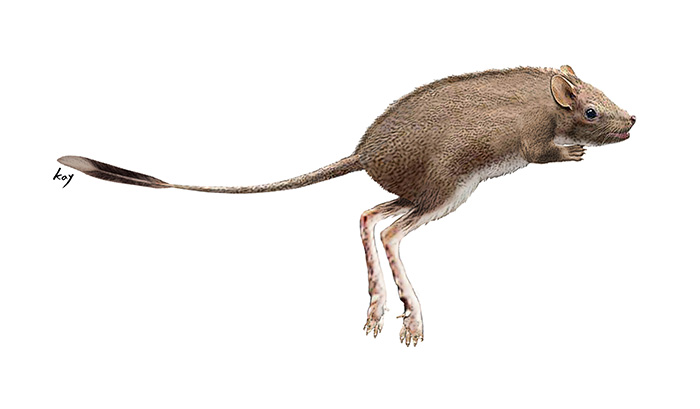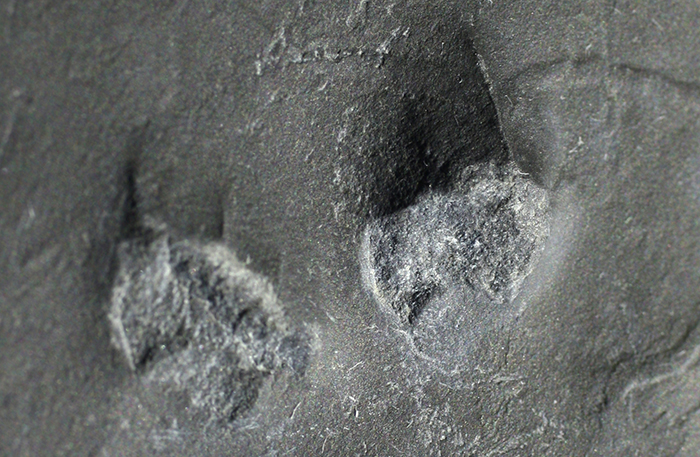-
 Korea.net's 24-hour YouTube channel
Korea.net's 24-hour YouTube channel- NEWS FOCUS
- ABOUT KOREA
- EVENTS
- RESOURCES
- GOVERNMENT
- ABOUT US

Based on tiny footprint fossils found in Jinju, Gyeongsangnam-do Province, scholars presume that the Cretaceous mammal may have looked like a contemporary kangaroo rat.
The trackway of a mammal from the earliest Cretaceous Period of the Mesozoic Era (145 to 66 million years ago), which hopped around on its hind legs like a kangaroo, has been newly discovered in Jinju, Gyeongsangnam-do Province.
The nine sets of hopping footprints were found in the Jinju Formation, a Mesozoic geologic formation from 110 million years ago. Finding the fossilized footprints of a hopping mammal from that era is unprecedented.
The animal who made the tracks has been named Koreasaltipes Jinjuensis, which means “a new type of hopping trackway found in Jinju.”
It was unearthed by a research team from Chinju National University of Education on Jan. 19, 2016. A joint team of scholars from Korea, the U.S. and China started a study on it following its discovery.

The footprints of a Cretaceous Period mammal are smaller than a KRW 500 coin, which has a diameter of 2.65 cm.
On average, the footprints are 1 cm long. The distance between the left and the right foot is 2.1 cm. The stride length is 4.1 cm on average. The researchers concluded that the prints belonged to a Cretaceous mammal because the middle toe is longer than the other toes, and the toes are all of a similar size and shape.
An official from the Cultural Heritage Administration (CHA) said, “It’s likely to have had a 10 cm body and to have looked like a contemporary kangaroo rat that lives in the deserts or grasslands.”
According to the CHA, the newly found fossil is morphologically different from previously found footprints from hopping mammals, such as the Ameghinichunus and Musaltipes, especially in the shape and angle of the toes and in the traits of the trackway. The new fossil has a more distinct hopping mark, too, it said.

Scholars presume that the footprints of a Koreasaltipes Jinjuensis, found in the 110 million-year-old Jinju Formation, represent a new type of mammal, judging by the toes that are similar in shape with the middle one sticking out.
A CHA official said, “This fossil is valuable because it proves that mammals, along with dinosaurs, pterodactyls, birds, crocodiles, lizards and fish, were living on the Korean Peninsula in the Cretaceous Period of the Mesozoic Era.”
Research results were published in “Cretaceous Research,” a scientific journal focusing on topics related to the Cretaceous Period, under the title “Korean trackway of a hopping, mammaliform trackmaker is global first from the Cretaceous,” on Feb. 7.
The CHA plans to allow public access to the actual fossil by displaying it in the National Heritage Center next year.
By Kim Young Shin
Korea.net Staff Writer
Photos: The Cultural Heritage Administration
ysk1111@korea.kr













